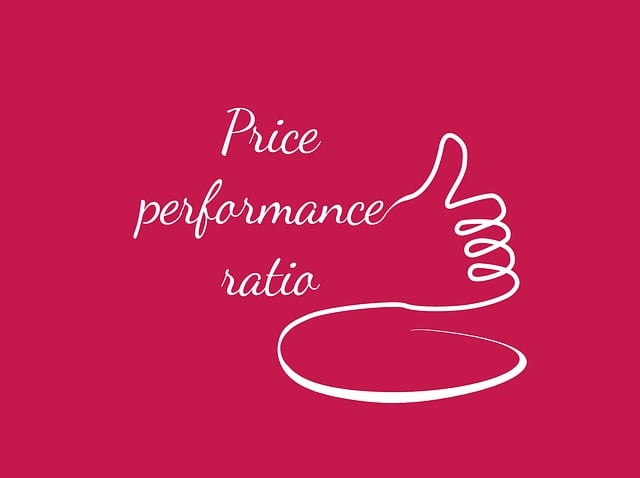Semaglutide, a cutting-edge GLP-1 receptor agonist, offers revolutionary type 2 diabetes management by mimicking natural hormones to regulate blood sugar and suppress glucagon. Administered via weekly injection, its convenience is enhanced by declining costs, making it more accessible and potentially reducing long-term healthcare expenses. While pricing variations pose challenges, efforts to negotiate costs and create patient assistance programs aim to ensure individuals with type 2 diabetes can access this effective treatment without financial barriers. Semaglutide's ability to prevent or mitigate diabetic complications makes it a valuable investment in metabolic health, with healthcare providers strategically incorporating it into treatment plans based on ROI considerations. Patient satisfaction depends on accessibility, affordability, and improvements in quality of life, leading to enhanced daily activities and social engagement. Looking ahead, semaglutide's preventive capabilities could significantly reduce chronic disease burdens and long-term medical expenses for healthcare systems.
“Semaglutide, a groundbreaking glucagon-like peptide receptor agonist (GLP-1 RA), has garnered significant attention for its potential to transform diabetes management. This article delves into the multifaceted world of semaglutide, focusing on its mechanism as a GLP-1 mimicker and its substantial return on investment (ROI) in health. We analyze the cost of semaglutide, its impact on metabolic health, and patient experiences, while exploring its promising role in preventive healthcare. By understanding these aspects, we can appreciate the value this treatment offers in managing diabetes.”
Understanding Semaglutide: A Glucagon-Like Peptide Receptor Agonist

Semaglutide is a groundbreaking medication that has gained significant attention in recent years, especially within the healthcare industry. It operates as a glucagon-like peptide-1 (GLP-1) receptor agonist, mimicking the natural hormone GLP-1, which plays a crucial role in regulating blood sugar levels. This innovative compound has shown remarkable potential in managing type 2 diabetes and has opened new avenues for improving patient health.
By targeting the GLP-1 receptors, semaglutide stimulates insulin production and suppresses glucagon secretion, leading to reduced blood glucose levels. Its unique mechanism of action offers a more natural approach to diabetes treatment compared to traditional insulin therapies. The medication is administered via injection, typically once weekly, making it convenient for patients. Moreover, the cost of semaglutide has become increasingly accessible, allowing for wider availability and potential long-term savings in healthcare expenses related to diabetes management.
The Cost of Semaglutide: An Analysis of Pricing and Accessibility

The cost of semaglutide has been a subject of discussion in both medical circles and among patients, as this medication plays a significant role in managing type 2 diabetes. With its groundbreaking effects on glycemic control, semaglutide offers a promising treatment option; however, the associated costs can pose challenges for individuals and healthcare systems alike. The pricing strategy of semaglutide injections varies across regions, influenced by factors such as manufacturer discounts, local market dynamics, and reimbursement policies.
Accessibility is another critical aspect to consider when analyzing the cost of semaglutide. Many patients struggle with affording this medication due to high out-of-pocket expenses, especially those without comprehensive insurance coverage. Efforts to improve accessibility include negotiations between pharmaceutical companies and insurance providers, as well as the development of patient assistance programs. These initiatives aim to make semaglutide more accessible and affordable for individuals living with type 2 diabetes, ensuring they can access an effective treatment option without facing financial barriers.
Health Benefits: How Semaglutide Improves Metabolic Health

Semaglutide, a novel glucagon-like peptide-1 (GLP-1) receptor agonist, offers substantial health benefits by significantly improving metabolic health. This drug plays a pivotal role in managing type 2 diabetes, a condition characterized by insulin resistance and impaired glucose metabolism. By mimicking the actions of the natural hormone GLP-1, semaglutide enhances insulin secretion in a glucose-dependent manner, promoting better blood sugar control.
Beyond its antidiabetic effects, semaglutide has been shown to reduce appetite and promote satiety, leading to weight loss. This dual action not only improves metabolic markers but also lowers the risk of cardiovascular diseases, a common complication associated with type 2 diabetes. The cost of semaglutide treatments has garnered attention, yet many agree that its potential to prevent or delay diabetic complications justifies the investment.
ROI in Diabetes Management: Evaluating the Return on Investment

In the realm of diabetes management, evaluating Return on Investment (ROI) is a strategic approach to understanding the financial and health implications of treatment options. Semaglutide, a novel drug, has emerged as a promising candidate, offering potential cost savings and improved health outcomes for patients with type 2 diabetes. The cost of semaglutide is a key consideration; while initial investment may be higher than conventional medications, its long-term impact on diabetes-related complications could significantly reduce overall healthcare expenses.
By assessing the ROI, healthcare providers can make informed decisions about incorporating semaglutide into treatment regimens. This evaluation includes factoring in not only the drug’s cost but also its effectiveness in glycemic control, reduction of cardiovascular risks, and potential for weight management—all aspects that contribute to improved patient health and quality of life.
Patient Perspectives: Access, Affordability, and Quality of Life

Patient perspectives on semaglutide treatment are pivotal, as access, affordability, and quality of life improvements are key factors in its widespread adoption. Many patients appreciate the accessibility of this medication, with increasing insurance coverage making it more reachable. However, one of the prominent concerns remains the cost of semaglutide. Despite potential savings from reduced healthcare expenses associated with diabetes management, the high upfront price can be a barrier, especially for those without robust insurance support.
The impact on quality of life is significant. Patients report improved energy levels and overall well-being, leading to enhanced daily activities and increased participation in social events. By managing blood sugar effectively, semaglutide contributes to reduced diabetic complications, further emphasizing its value from the patient’s perspective. However, ongoing discussions around pricing strategies are essential to ensure that the benefits of this treatment reach a broader audience.
Future Prospects: Potential for Semaglutide in Preventive Healthcare

The future prospects of semaglutide hold immense potential, particularly in the realm of preventive healthcare. As a highly effective medication with a proven track record, it offers a promising avenue for reducing the burden of chronic diseases, such as type 2 diabetes and cardiovascular conditions. By targeting key health indicators, semaglutide can play a pivotal role in promoting wellness and reducing long-term medical expenses, thereby enhancing overall population health.
The cost of semaglutide, while significant, may be offset by the substantial savings associated with its preventive capabilities. By addressing health issues early through this medication, healthcare systems could potentially reduce the need for more intensive and costly treatments in the future. This shift towards proactive healthcare management could lead to a healthier population and a more sustainable healthcare ecosystem.
